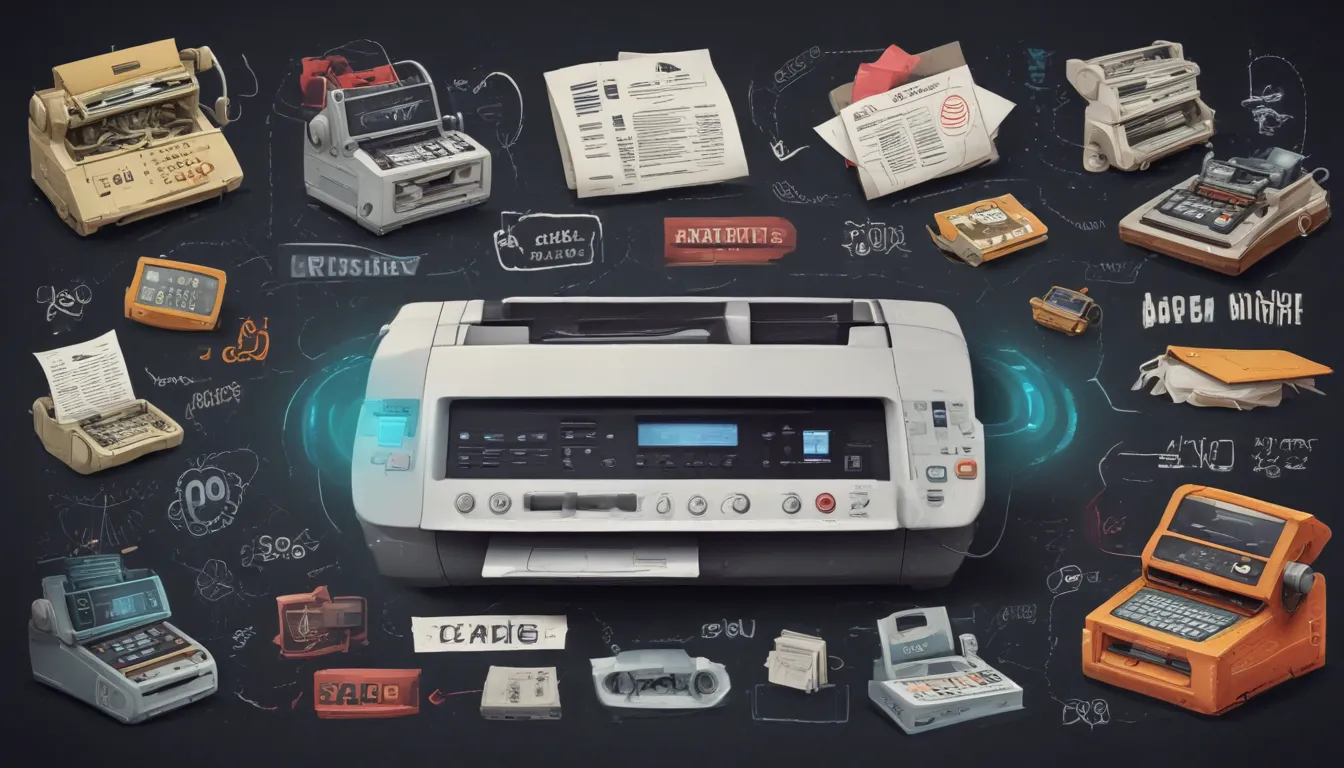A Note About Images: The images used in our articles are for illustration purposes only and may not exactly match the content. They are meant to engage readers, but the text should be relied upon for accurate information.
In a world dominated by digital communication, the fax machine stands as a testament to the enduring legacy of technology. From its humble beginnings in the 19th century to its integration with modern digital platforms, faxing has played a vital role in document transmission across various industries. In this article, we will delve into 19 intriguing facts about fax machines, shedding light on their historical significance, technological advancements, and practical applications in today’s interconnected world.
The First Fax Machine Was Invented in 1843
Italian physicist Giovanni Caselli invented the first fax machine, known as the “pantelegraph,” in 1843. This groundbreaking device allowed for the transmission of images and text over long distances using telegraphic lines. The pantelegraph laid the foundation for modern fax technology, revolutionizing communication in the 19th century.
The Term “Fax” is an Abbreviation
The term “fax” is derived from “facsimile,” which comes from the Latin words “facere” (to make) and “similis” (similar). Fax machines are designed to replicate printed or handwritten material faithfully, reflecting their primary function of creating accurate reproductions of documents.
The First Commercial Fax Machine was Introduced in 1964
Xerox Corporation introduced the first commercial fax machine, the Xerox Magnafax Telecopier, in 1964. This innovative device revolutionized business communication by enabling the rapid transmission of documents over telephone lines, streamlining document exchange and enhancing operational efficiency.
Fax Machines Gained Popularity in the 1980s and 1990s
During the 1980s and 1990s, fax machines experienced a surge in popularity, becoming essential tools for businesses, government agencies, and individuals. The convenience and speed of transmitting documents over standard telephone lines made fax machines indispensable for sharing contracts, agreements, reports, and other critical documents.
Fax Machines Utilize Analog and Digital Signals
Fax machines operate by converting documents into electronic signals for transmission over telephone lines. Initially, analog fax machines used audio frequencies to encode and decode information. With technological advancements, digital fax machines emerged, employing binary encoding to represent data accurately.
Fax Machines Can Transmit Images and Text
One of the remarkable capabilities of fax machines is their ability to transmit both images and text. This versatility enables the seamless transfer of handwritten notes, diagrams, signatures, and other visual content, in addition to printed text, fostering efficient communication across various industries and professions.
Fax Machines Were Integral to Telemedicine Advancements
Fax machines played a pivotal role in the advancement of telemedicine, allowing healthcare providers to transmit medical records, prescriptions, and diagnostic images securely and expeditiously. This integration significantly improved healthcare accessibility, particularly in remote areas, enhancing medical services and patient outcomes.
Fax Machines Faced Obsolescence with Digital Communication
With the rise of digital communication technologies such as email and cloud-based document sharing, traditional fax machines faced the risk of obsolescence. Despite the emergence of digital platforms, fax machines continue to play a role in certain industries and legal contexts, demonstrating resilience amid evolving communication trends.
Fax Machines Are Vulnerable to Cybersecurity Risks
While fax machines are perceived as secure communication tools, they are susceptible to cybersecurity risks, such as unauthorized interception and data breaches. Efforts to address these concerns have led to the development of secure fax solutions and encryption protocols, bolstering the protection of sensitive information during transmission.
Fax Machines Have Evolved into Digital Fax Services
The evolution of fax technology has given rise to digital fax services, offering enhanced functionality and flexibility for document transmission. These services leverage internet connectivity to transmit documents, eliminating the need for dedicated fax machines and analog telephone lines, catering to modern communication requirements.
Fax Machines Remain Relevant in Legal and Regulatory Contexts
In legal and regulatory contexts, fax machines continue to be vital for transmitting official documents, contracts, and notices. The acceptance of faxed documents in legal proceedings and regulatory compliance highlights the enduring relevance of fax technology in formal communication channels.
Fax Machines Support International Document Exchange
Fax machines facilitate international document exchange, enabling the swift transmission of contracts, agreements, and other business documents across geographical boundaries. This capability expedites global business operations and fosters international collaborations, overcoming logistical challenges and ensuring timely communication in a globalized business environment.
Fax Machines Offer Confidential Document Transmission
The secure transmission of confidential documents has been a hallmark of fax machines, positioning them as a trusted medium for exchanging sensitive information. The direct point-to-point transmission and minimal exposure to third-party interception contribute to the confidentiality of faxed documents across various industries.
Fax Machines Have Environmental Implications
The use of traditional fax machines has environmental implications due to paper consumption and energy usage. Efforts to mitigate environmental impact include the adoption of digital fax solutions and paperless faxing practices, aligning with sustainability initiatives in modern workplaces.
Fax Machines Are Integrated into Multifunction Devices
Modern multifunction devices often include fax capabilities alongside printing, scanning, and copying functions, consolidating document management tasks within a single device. This integration reflects the ongoing relevance of fax technology in diverse operational settings, catering to varied document processing needs.
Fax Machines Have Inspired Artistic Expression
Fax machines have inspired artistic expression through fax art, where artists use fax machines to create visual artworks. This niche artistic movement explores the intersection of technology and creativity, showcasing the inventive utilization of fax machines beyond conventional communication purposes.
Fax Machines Are Embedded in Cultural References
Fax machines have become embedded in cultural references and popular media, symbolizing communication, bureaucracy, and technological advancement. Their portrayal in films, literature, and art underscores their historical and societal impact, resonating with audiences across different generations.
Fax Machines Continue to Evolve in the Digital Age
In the digital age, fax machines have evolved into digital services, cloud-based faxing, and secure transmission protocols. This evolution highlights the adaptability of fax technology in embracing digital advancements while preserving its fundamental role in document transmission.
The Future of Fax Machines
The future of fax machines lies in their convergence with digital communication platforms, enhanced security measures, and seamless interoperability with modern document management systems. As technology advances, faxing continues to adapt to evolving communication trends, shaping the dynamics of electronic document exchange in today’s interconnected world.
In conclusion, fax machines have left an indelible mark on the fabric of human communication, embodying the convergence of innovation and utility in information transmission. Understanding the history, benefits, and modern applications of faxing is essential for leveraging this enduring communication tool in today’s interconnected world.
Was this page helpful? Our commitment to quality and authenticity ensures that each fact we share is trustworthy and engaging. Explore and learn with us, knowing that our dedicated editors review each submission to uphold the highest standards of accuracy and reliability.






